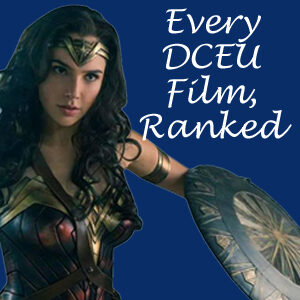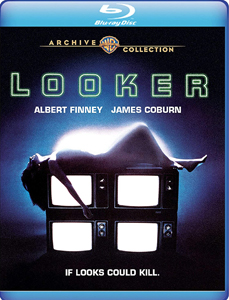“Looker” (1981) is my second-favorite among writer-director Michael Crichton’s futuristic films, trailing “Coma” (which only gets futuristic in the final act) but coming in ahead of “Westworld” and “Runaway” (which are interesting for their ideas but shorter on entertainment). It’s a smart film about the power of perfected technology that appropriately uses cutting-edge technology in its production.
The medium is the message
“Looker” has a little cheese in the ease with which Everyman plastic surgeon (how’s that for a Crichtonian protagonist) Dr. Larry Roberts (Albert Finney) evades the corporate forces of John Reston (James Coburn). It also has tasty 1980s trappings like dramatic synth keys (a la “The Terminator” from a few years later), which dominate the final act.
Finney is a suave lead, even if Larry’s success against multi-billion-dollar Reston Industries is convenient. As Cindy, Susan Dey is, well, a looker – and a sympathetic heroine. Even aside from the tech, Cindy’s situation says something about the modeling industry, where the goal is to make yourself into a product.

“Looker” (1981)
Director: Michael Crichton
Writer: Michael Crichton
Stars: Albert Finney, James Coburn, Susan Dey
“Looker’s” biggest appeal is the core message, as writer-director Crichton predicts the increasing manner in which TV (both entertainment and commercials) can manipulate people’s behaviors. And it does so with their passive cooperation, rather than via force (as with mandatory public schooling).
Future tech from the past
The specifics are amusing but forgivable if you have a soft spot for old movies that predict future tech. On a floor of the Reston Industries skyscraper, commercials are made with computer-generated actors (scanned from human models) on real sets.
This is the opposite of how the movie industry advanced in reality: actual actors on CGI sets. For instance, in the “Star Wars” prequels, many critics noted the stiff performances resulted from actors not having sets around them, as those were added in post-production.
This makes sense: Solid objects are easier to create in a computer than an animated performance that totally looks like a real person. Indeed, the latter has not been perfected as of 2022 – although there are some beautiful-looking animated films and TV shows.
Plus, actual actors’ performances can be manipulated (the visual de-aging technique, popularized in the MCU superhero films, is perhaps the most famous). Or one actor’s face can be pasted onto another’s body, as with Ryan Reynolds and the muscleman in “Free Guy.”
Data points
Still, Crichton gets laughs out of his backward conceit. As guests at a lower-floor gathering watch a live feed of the commercials being made, Reston’s henchman (Tim Rossovich), Larry and Cindy pop into the shot amid their shootout and chase. The juxtaposition is amusing to the guests and to us.

“Looker” follows the standard conspiracy noir plot – also used in “Coma” – but does things a little differently, a little weirder. It tiptoes toward “Runaway’s” level of cheese, particularly when Crichton lingers over a robotic janitorial box that moves slower than the laziest of human custodians.
Instead of traditional guns, the featured gun here hypnotizes a person into freezing in place for an hour or so. This leads to an unintentionally funny car chase where Larry and Reston’s henchman shoot freeze-rays at each other. The henchman eventually puts on sunglasses to protect himself (shades — literally — of “Men in Black”).
New technological techniques
In the realm of real-world tech, “Looker” is groundbreaking for showing a rotatable 3D computer model of Cindy. Crichton shoots the scanning process sensually, rotating the camera around Dey in moody, flattering lighting. It represents the allure of new tech entering our lives.
This marks the third Crichton-related film that notches a “first” in the field of computer animation. “Westworld” showed the gunslinger’s POV with raster graphics (think of early computer games). And “Futureworld” (the “Westworld” sequel made without Crichton) did 3D animations of a human face and hand, as well as digital compositing.
The specifics might be a little weird, but “Looker’s” idea of curated and targeted ads taking over people’s lives – with few complaints – remains relatable in 2022. I enjoyed watching the film, and I wasn’t manipulated into that feeling. At least I don’t think I was.

